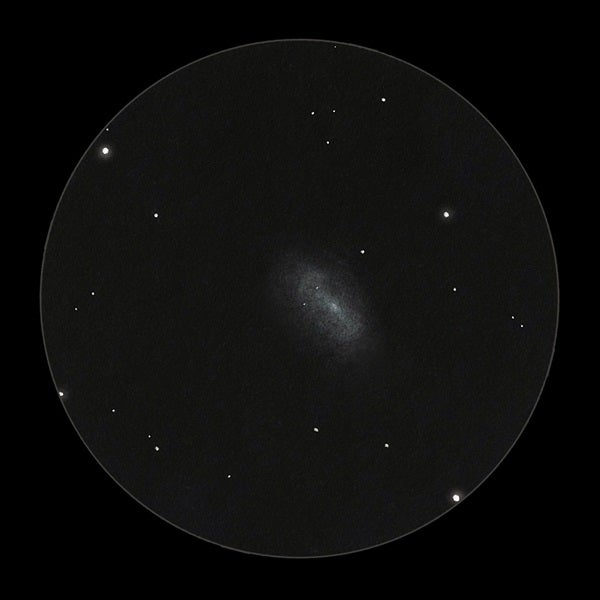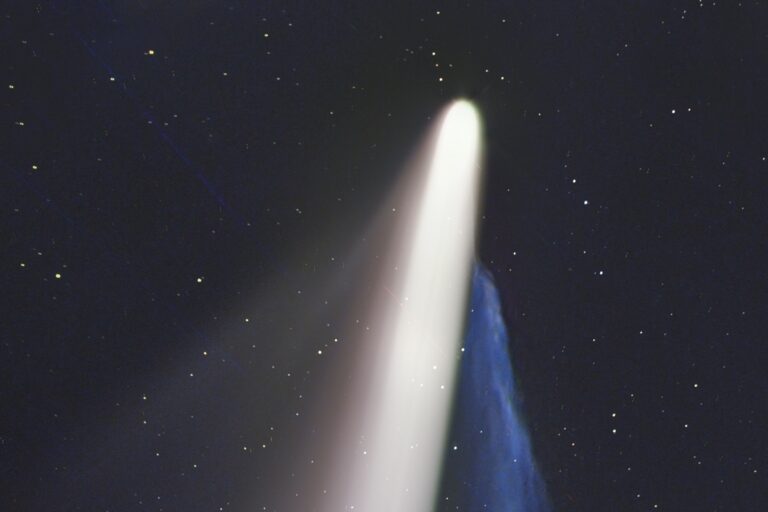I pondered that very question the first time I stumbled across a small wooden paddle with strips of sandpaper stapled to it while browsing for art supplies. As it turns out, it’s so handy that I use it during most observing sessions. I’ve included sketches of NGC 4747 and NGC 4725, galaxies in the constellation Coma Berenices, to explain how.
Peculiar entry
You can locate this duo some 5½° northwest of Beta (β) Comae Berenices. The smaller of the two, NGC 4747, appears as the 159th entry in Halton Arp’s Atlas of Peculiar Galaxies. It sports tidal tails from its interaction with NGC 4725, which lies 24′ farther to the southwest. The galaxy itself measures 3.5′ by 1.2′ and glows at magnitude 12.3. Through a 10-inch scope, it appears as a faint oblong halo with a brighter center. And you’ll find a wide double star (7th and 10th magnitudes) 7′ to its south.
Perhaps the sandpaper block’s most common use is to shape the tip of a pencil. Softer graphite and pastel pencils are fragile and break easily when you use a regular pencil sharpener. So instead, do as I’ve done while sketching NGC 4747: Shave away the pencil’s wood casing with either a knife or sharpener, and then use the sandpaper to create a rounded, pointed, or even a diagonally shaped tip. (And here’s an extra tip: Save the residual graphite powder in a small container for later use. I’ll return to this in a bit.) For example, I often use an 8B graphite pencil with a blunt, rounded tip to render the brightest stars. I then draw the faintest with a sharp 2H pencil.
Single-arm splendor
Next up is NGC 4725. It’s a one-armed spiral spanning 10.7′ by 7.6′ that glows at magnitude 9.2. Through a 6-inch telescope, the galaxy appears as a moderately bright northeast-to-southwest halo with a dense core. Bumping the aperture to 12 inches reveals hints of the broad spiral arm with the brightest arcs northeast and southwest of its faint central bar. Be sure to look for two 14th-magnitude stars twinkling in front of the northeastern quadrant of its halo. You also should spot NGC 4712, a smaller galaxy that lies 12′ farther to the west-southwest.
I prefer using the soft, chamois-like texture of a blending stump to render subtle details within intricate galaxies like NGC 4725. So, after drawing the star field for this sketch, I dipped the tip of my blending stump into the container of graphite powder I had created earlier, and then used the coated stump to draw the galaxy’s core and bright arcs. Alternatively, you can scratch a patch of graphite outside of the sketch area with your pencil and then rub the tip of the blending stump through it.
The graphite will gradually build up on the tip of the blending stump until it hinders the control needed to draw the soft tonal layers of the galaxy. Simply rub the tip vigorously against the sandpaper until you restore its shape and soft texture, and then continue with the sketch.
Do you use a chiseled eraser to draw dark lanes? If so, you also can use sandpaper to clean and shape erasers. Explore other uses for this handy tool and let me know what you come up with.
Questions or comments? Contact me at erikarix1@gmail.com.












